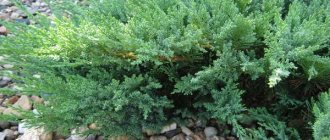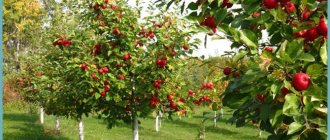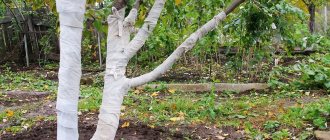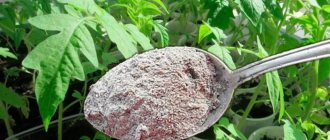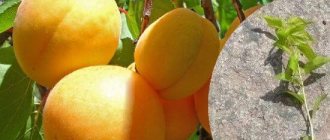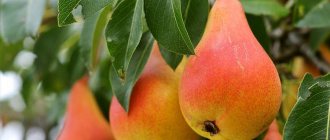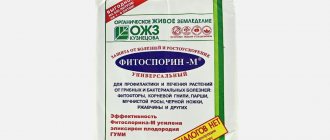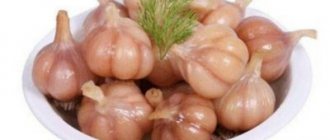Why are hares and other rodents dangerous in the garden?
Small animals are a real problem for gardeners. The reason for this is most often a sharp decrease in feed supplies. In search of food, animals wander into a summer cottage without fear, where an abundance of all kinds of fruit trees awaits them.
Did you know? Contrary to popular belief, hares are not exclusively herbivores. They can readily eat animal food, including meat.
During periods of food shortage, young branches, seedlings, and tree bark become the main food source for hares and rodents. As a result of this, just one regular at the site can completely destroy an apple orchard.
Left without bark, both young and mature trees dry out, and in winter cold conditions they freeze out in just a few days. As a result, the gardener’s painstaking work is nullified, and restoring former plantings often requires more than one summer season.
Photo gallery: species of voles that gnaw apple trees
The entrance to a water vole's burrow is almost impossible to notice.
The field vole is difficult to distinguish due to its dark fur
The bank vole lives non-stop 24 hours a day
During the day, the common vole eats food equal to 50–70% of its body weight
Forest guests
The white hare is small, in summer it feeds on grass and herbaceous plants, but in winter it raids gardens, eating apple trees, buds on old trees, and young shoots on seedlings. An apple tree is a delicacy for him, but if he gets hungry, he will gnaw off all the trees in sight. The brown hare eats the same things as the hare; stays in open places: fields, forest edges, loves to look into the garden. It is difficult to keep track of the animals, because their activity occurs in the dark, and on a moonlit night, hares can feed until the morning. Although the hare no longer belongs to the order of rodents, it gnaws the bark of many trees thanks to its powerful front teeth - incisors. And if mice work like a jeweler, more or less evenly removing a layer of bark, then hare gnaws are rough, deep and long.
A hare's teeth are powerful and grow throughout its life.
Effective protection against hares is a net or any other material wrapped around the trunk to a height of at least 1.5 m. Why so high? The body length of the hare is 45–47 cm, the hare is 55–67 cm. Add here the length of the hind legs, which is almost equal to the length of the body (and the hare can stand “on tiptoes,” significantly increasing in height). The higher the snowdrift, the greater the damage to the bark.
Standing on its hind legs, the hare significantly increases in height and damages trees to a height of more than 1 meter
By the way, I prepared the apple trees in the fall by wrapping the bases of the trunks with nylon tights, but this year there was more snow than ever, and the hares gnawed the trunks above the wrapped one.
izid
https://www.websad.ru/archdis.php?code=570534
For me, there is no creature worse than mice and hares than an ordinary domestic goat - the most malicious garden pest from early spring to late autumn. These insidious creatures with amazing insight find the slightest loopholes to get to the coveted plants. From my sad experience, I remember a November day when four neighbor’s goats, left unattended by the owner, entered my front garden through a slightly open gate (but that’s a different story). In just a few minutes they managed to taste rose bushes with huge thorns, lilacs and my favorite Golden Delicious. Everything was eaten, gnawed and broken off with barbaric cruelty, and my emotional experiences at that moment were beyond description. Subsequently, only a strong high fence and a bolted gate protected my plantings from the encroachments of horned beasts.
Goats seem to be able to climb any tree.
What are the signs of tree damage from rodents?
All kinds of pests in the garden appear suddenly and become active only at night, so it is possible to identify the danger in the area only after some of the plantings have already been damaged or completely died. This is a real problem for a gardener because it is not easy to save a damaged garden. That is why every gardener should definitely become familiar with the first signs of a pest attack.
Important! Moles and shrews are not dangerous for apple trees. They are predators, so they feed exclusively on small insects and earthworms.
The following says about the visits of hares to the site:
- shoots of young trees are completely destroyed, to the ground;
- seedlings under 1 year old were destroyed at the roots;
- the bark of mature trees at a height of up to 1 m above the soil is partially or completely destroyed;
- holes and trenches appeared in the ground, especially near large apple trees;
- characteristic waste of animals near the plantings is noticeable.
The same signs may indicate the appearance of water and wild rats, as well as beavers, in the garden. At the same time, visits by the latter can cause serious damage to the trunk, since animals can often completely chew through the trunk or thick branches. Mice and other smaller pests are more difficult to identify.
The first thing you should pay attention to is the complex of round holes in the soil in which they live or hide from danger. Their appearance is also indicated by bare roots (located on the surface of the soil) or the basal part of the apple tree stem. If rodents appeared in the warm season, then the area will experience damage to the harvest of root crops and other vegetables.
We recommend that you find out what to plant under an apple tree for beauty and maximum benefit.
What can't you do?
Let's get acquainted with the list of actions that should not be done under any circumstances.
- Use straw as a covering or binding material. This is a real treat for furry ones.
- You should not use plastic bags as tying methods. They heat up in the cold and will lead to frostbite in the young tree. Some mice may try to chew through the plastic bag. This will lead to the death of the voles and, at the same time, damage to the trunk.
- You shouldn't indulge in poisons. This method will indeed help get rid of mice, but at the same time, will such a plant be safe for the next period? Indeed, in this matter you need to carefully calculate the proportions, have an idea of whether the apple tree belongs to a particular species, and so on. In order to protect yourself and your loved ones, it is better not to use this method.
How to protect your garden from hares and mice
Not many people know how to save a garden from rodents and hares and prevent their appearance. However, often these measures involve compliance with simple but quite important rules for growing an apple tree in the garden. These, first of all, include timely cleaning of the garden, as well as other agricultural practices, including soil care.
Garden cleaning
Putting things in order in the garden is a great way to avoid the appearance of hares or rodents . These animals are afraid of open areas, so removing excess garbage creates a psychological barrier for them to populate the area. To do this, you only need to promptly remove leaves and other remnants of vegetation, which become the main refuge for pests.
Digging up the garden
Loosening the soil in the garden is also considered a fairly simple but effective method of preventing the appearance of rodents and hares on the site. By carefully digging the soil to a depth of 35–40 cm, you can completely block mouse holes, which will certainly destroy all the animals’ chances for intensive reproduction. In addition, loosening creates unfavorable conditions for hares to undermine the site.
How to save a damaged tree
I decided to fight to save the apple tree - it’s a very good variety! all the eaten roots with three heteroauxin tablets to stimulate root growth. I added about 3 liters of ash and 300 g of superphosphate to the soil. Before filling the hole with soil, the area of damaged roots was sprinkled with ash.
the tree to a stake, covered it with earth, and compacted the soil. Then, to bring balance between the roots and branches, I trimmed the branches - leaving 20% of the branches, i.e. the same amount as there were roots .
To prevent water rats from returning to their favorite place, I placed a piece of cloth soaked in a 2% formaldehyde solution under the apple tree. The second piece of fabric was stuck into a hole not far from the apple tree.
Over the summer, the tree recovered, grew roots and crown. Now the Candy apple tree is a powerful tree that pleases us with delicious fruits.
How to protect a young apple tree from rodents in winter
Protecting an apple orchard in winter is considered a rather labor-intensive procedure. During this unfavorable period of the year, it is especially difficult to identify traces of the spread of pests, as well as to take preventive measures. In addition, often if an apple tree is damaged in winter, it is not possible to save the plant.
Guard and wrap
Fencing an apple tree is considered one of the most common and proven methods for protection. With its help, you can prevent tree damage at almost minimal cost.
The most common fencing is a metal mesh with a fine mesh. It is dug deep into the soil in a circle around the trunk. In this case, they use a proven rule: the smaller the cell size, the less chance there is for pests to damage the apple tree.
An alternative to fencing is tightly wrapping the apple tree. For this, the most effective material is considered to be spruce branches, which completely cover the trunk, right up to the first tier of branches.
They can be replaced with any dense material of artificial or natural origin. Most often, thick burlap, nylon fabric, parchment paper, etc. are used for this. If there is a body of water in close proximity to the site, you can use reeds.
As an alternative, it is acceptable to use plastic bottles. They are used to create hollow cylinders with a longitudinal cut on one side, which are placed on a tree trunk. However, in this case, the plastic should not fit tightly to the bark, otherwise the plant tissue will be blocked.
Wrap the bark before frost sets in, otherwise the procedure may become completely useless. The most acceptable period for this is the end of leaf fall.
Repellents
Since hares and other small pests are quite shy, you can deal with them using repellents not only quickly, but also for a long time. The simplest of them are narrow ribbons made of foil or carbon paper, about 15–20 cm long. They are tied to branches along the entire perimeter of the crown. In the wind they will create an unpleasant, frightening noise.
Empty glass bottles can also be used as a sound repeller. Several containers must be secured around the perimeter of the site, at an angle of 45° (neck up). To do this, bottles can be tied to pegs or simply buried in the soil. The wind passing by the containers will create an unpleasant hum, which will also help drive moles out of the garden.
Coating and spraying
All kinds of chemicals today are considered the most effective ways to repel hares, mice and other pests. The most popular are chemicals with a strong odor. The preparations are sprayed over the entire surface of the trunk, as well as on the lower tier of branches. You can replace expensive foreign drugs with natural coatings that you prepare yourself.
Important! Treatment of trees should be carried out before the onset of winter, since such procedures in frosty weather will have a negative impact on them.
The following recipes are considered the most effective:
- equal parts of clay and thick cow manure are mixed and diluted to a thick sour cream, add 1 tbsp to 10 liters of this product. l. carbolic acid;
- a mixture of 4 kg of manure, 100 g of creolin and 90 g of karbofos must be diluted with water until thick but homogeneous;
- 1 liter of vegetable oil and diesel fuel, 170 g of soap, 150 g of naphthalene and 50 g of copper sulfate should be dissolved in 50 liters of water;
- 1 liter of denatured alcohol should be thoroughly mixed with 800 g of crushed rosin.
Lures
Baits are considered a last resort measure against rodents and hares, so they are used only if other attempts have not brought the desired result. Baits are small trays with poisoned food, after eating which the pests die. They often take the form of a variety of compacted tablets with a rich aroma, but they can also be in crumbly form.
Place bait along the entire perimeter of the site, as well as around the apple tree. At the same time, it is imperative to limit the movement of pets in the garden, otherwise they may also suffer. Poisoned food lasts for a long time, but the bait needs to be updated periodically.
Find out also how to get rid of bark beetle on an apple tree.
Ultrasound
In recent years, ultrasonic repellers have gained enormous popularity. They create an unpleasant high-frequency sound (18 to 24 kHz) that is harmless to humans and most pets. Even the simplest installation allows you to create a protective zone with an area of about 100 m².
The most advanced models are equipped with a motion sensor, with which the device turns on only in the event of unauthorized entry of pests. Such devices are installed directly on the site, on an elongated peg, or on the nearest garden building.
Traditional methods
There are many folk remedies for protecting apple trees from hares and rodents. They usually involve the use of substances with a strong and persistent odor. Their main advantage is the absence of direct contact with the apple tree, which allows protective procedures to be carried out systematically.
The most effective among them are the following:
- Black pepper - the product has a very pungent odor that repels pests. It is scattered around the perimeter of the entire site.
- Naphthalene - the smell of this substance is very rich and is not liked by hares and rodents. Naphthalene tablets are placed throughout the site, as well as near the apple tree itself.
- Fish oil is one of the best alternatives to mothballs. Cotton swabs are impregnated with the product and secured to pegs installed in the tree trunk or along the perimeter of the garden.
Did you know? The apple tree was domesticated by humans about 7 thousand years ago. Thus, this is one of the oldest cultivated plants, which today has more than 7.5 thousand of various varieties.
Covering material
Wrapping the trunks serves two purposes: it protects the plant from severe frostbite and from rodents. The covering material used by gardeners is varied. The main thing is that it is dense enough. This could be agrofibre, burlap, old stockings, plastic bottles or film.
It is recommended to use canvas in neutral shades. This facilitates the uniform flow and distribution of heat and light onto tree trunks.
Organic material should not be placed under the canvas when wrapping trunks. This will be a great bait for rodents. Dry leaves, straw, hay and even peat or mouse humus are suitable building materials for burrows.
Before you start covering plants, it is important to understand the principle of how to protect an apple tree from mice in winter, and then use the materials available. It is as follows: the protective layer should cover not only the trunk to the first branches, but also cover the soil around the tree. This involves the use of several types of material or protection techniques. Moreover, the covering tissue must be firmly fixed at the root area. The root system is covered with mulch soaked in a caustic agent to repel mice.
Treatment methods for trees damaged by rodents
If it was not possible to prevent damage to the apple tree, and part of the bark was destroyed, you should immediately resort to saving the tree. In just a few days, it can dry out or become infected with fungal infections.
First of all, the damaged area must be treated with garden pitch or a creamy mixture of equal parts clay and cow dung. You can replace them with special products from garden stores. They are no less effective, but will cost several times more.
Treatment of damage with garden pitch After this, the damaged parts should be tightly wrapped in burlap, nylon, hay or straw. After a dense crust appears on the damaged part, the cover can be removed from the trunk. In this case, it is forbidden to remove the coating; it must be removed on its own, naturally (by rain or wind).
Dangerous situation
In winter, rodents move to areas closer to people to find food.
They become more active because it becomes cold in their natural habitats and there is a lack of food. Mice gnaw on the trunk, but most often damage only the bark; the trunk does not suffer much. But sometimes they undermine the roots of a plant, especially if they settle under it. Hares cause more damage and can chew through the cambium. Trees usually recover on their own if only part of the bark is damaged. But severe damage to the tree is not able to heal. Damage to the cortex causes several problems:
- without external protection, the tree suffers from the cold;
- open wounds can contain harmful bacteria or fungal spores;
- If the cambium is damaged, the tree's nutritional procedure is disrupted.
In any case, you should not ignore apple trees that have been damaged by rodents. If a tree trunk is damaged around its circumference, the tree becomes very sick and may even die.

